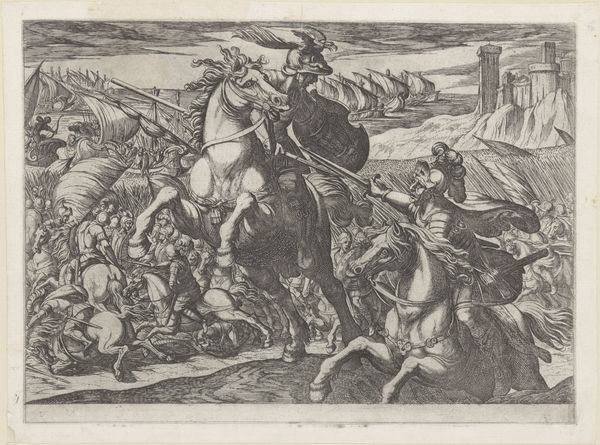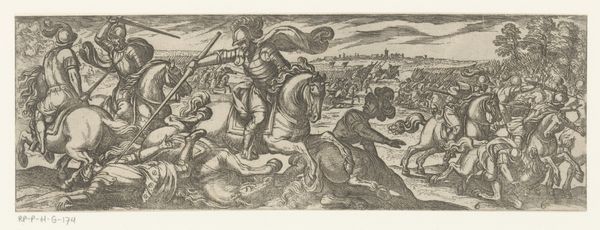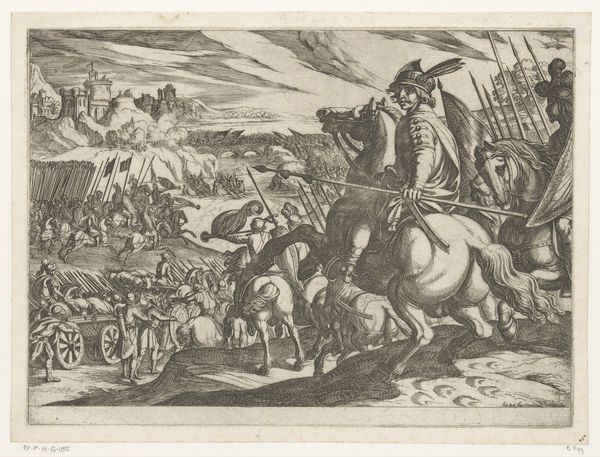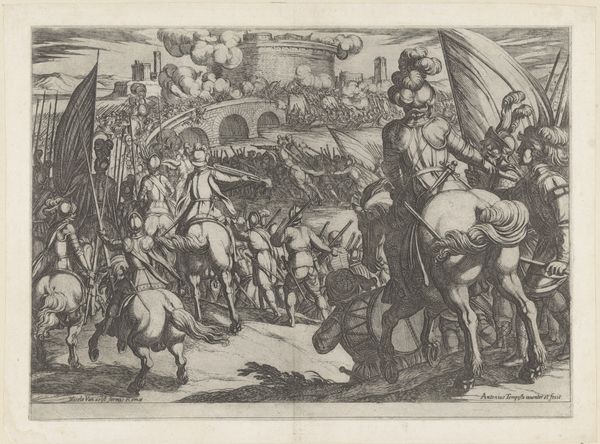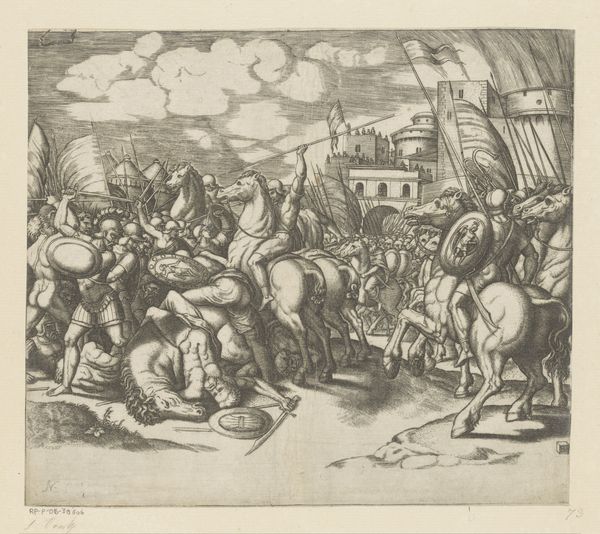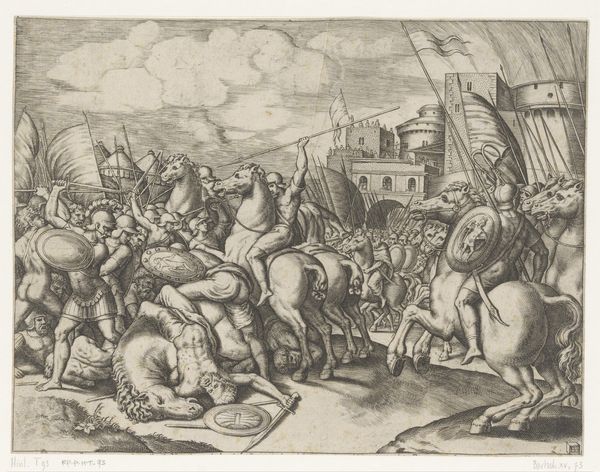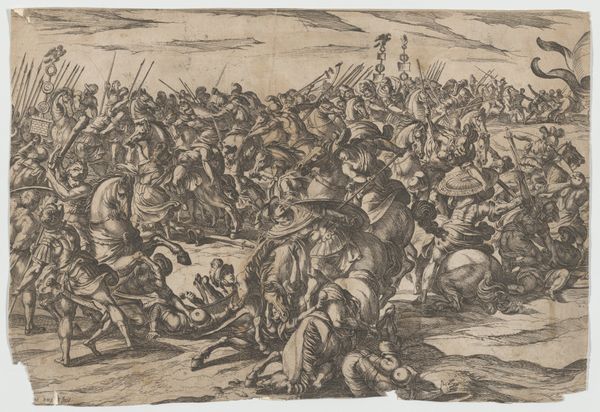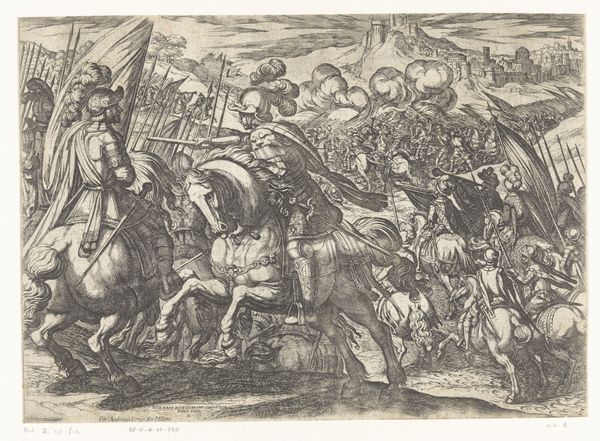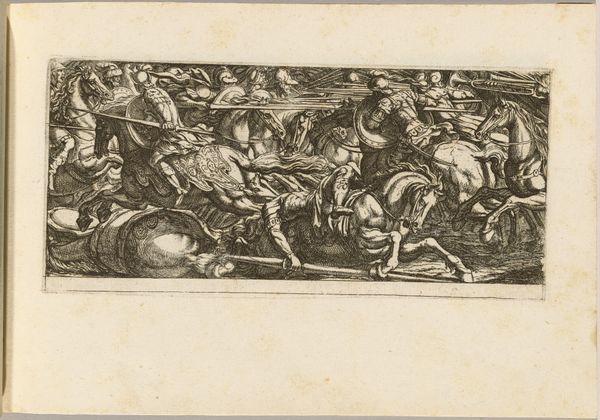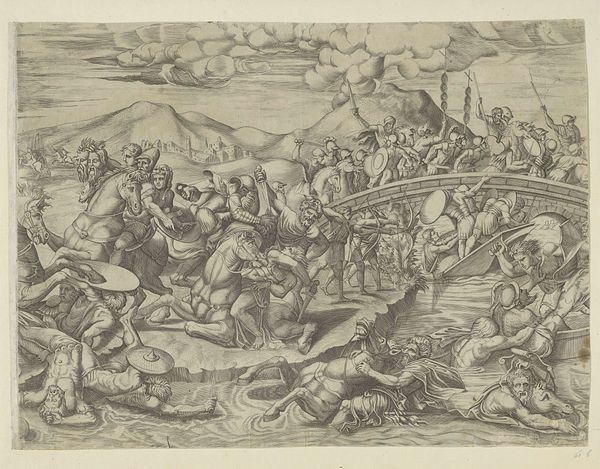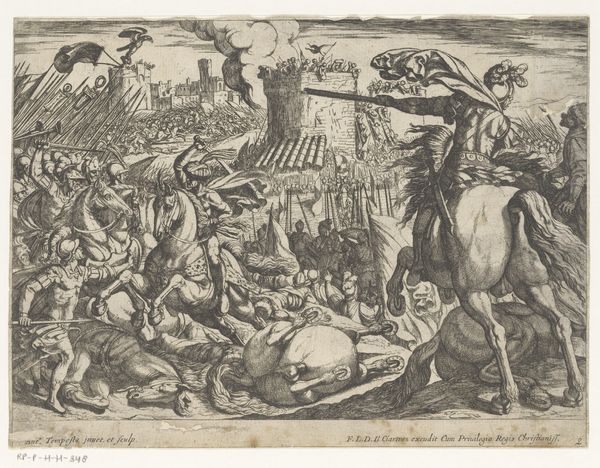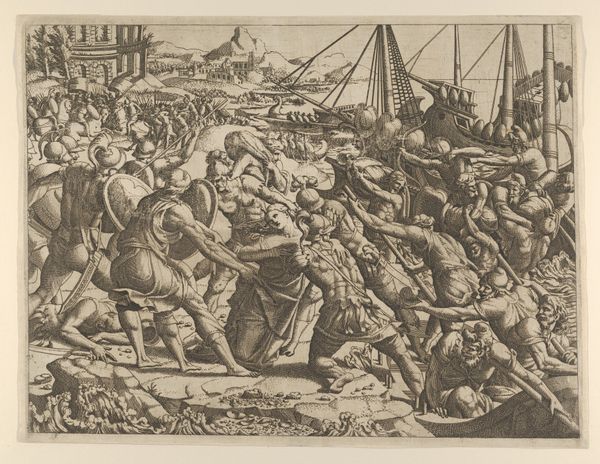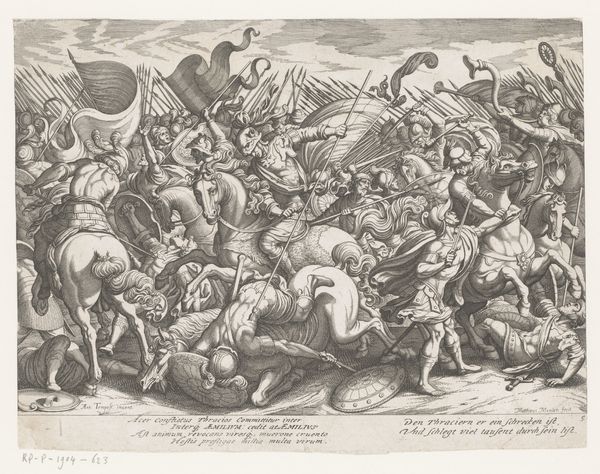
drawing, print, etching, ink, engraving
#
drawing
#
comic strip sketch
#
medieval
#
baroque
#
pen drawing
# print
#
pen illustration
#
pen sketch
#
etching
#
old engraving style
#
landscape
#
mannerism
#
figuration
#
personal sketchbook
#
ink
#
ink drawing experimentation
#
pen-ink sketch
#
line
#
pen work
#
sketchbook drawing
#
genre-painting
#
history-painting
#
engraving
#
realism
Dimensions: height 96 mm, width 270 mm
Copyright: Rijks Museum: Open Domain
Curator: What we have here is "Fighting Soldiers on Horseback by a River," an etching and engraving created around 1599 by Antonio Tempesta, held here at the Rijksmuseum. Editor: It feels incredibly kinetic, chaotic even. The horses are rearing, the soldiers clashing—the entire scene vibrates with this sort of raw, uncontrolled energy. It is a Mannerist spectacle of war. Curator: Tempesta certainly excelled at capturing dramatic movement. The compressed composition throws you right into the fray. Look how he uses the river itself almost as another character in the conflict, disrupting the solid ground, adding to the instability. Editor: I see more than just movement; there is something quite disquieting. Despite all this apparent dynamism, the faces of the soldiers remain oddly blank, almost doll-like. This contrast diminishes their humanity. It feels ritualized and, dare I say, dehumanized. Curator: Indeed. The ritualization is central. Warfare, for Tempesta and his audience, wasn’t just physical conflict. It was loaded with symbolic weight. Horses, for instance, often represented nobility and martial prowess. Here, that nobility is put to the test and brought down into this bloody scene of anonymous death. This is perhaps also linked to Tempesta’s historical role, as he captured key historical scenes such as battles for patrons eager to project an image of power through continuity with Roman history. Editor: That's interesting. So you’re saying the blank faces are part of the symbolic framework, almost like masks in a macabre pageant of violence? Curator: Precisely! Their anonymity speaks to the universality of war, a continuous thread woven through history. The river is a border that men keep crossing and recrossing through their eternal struggles. Editor: The tension between the dynamism and the figures' stoicism becomes more profound when considered that way. This tension allows us to perceive the violence without having a connection to any of the protagonists. Curator: Seeing the battle now almost feels as if it occurred outside time itself. Editor: For me, revisiting the piece has allowed me to look past the immediate drama, seeing within its formal structure a timelessness I originally overlooked.
Comments
No comments
Be the first to comment and join the conversation on the ultimate creative platform.
